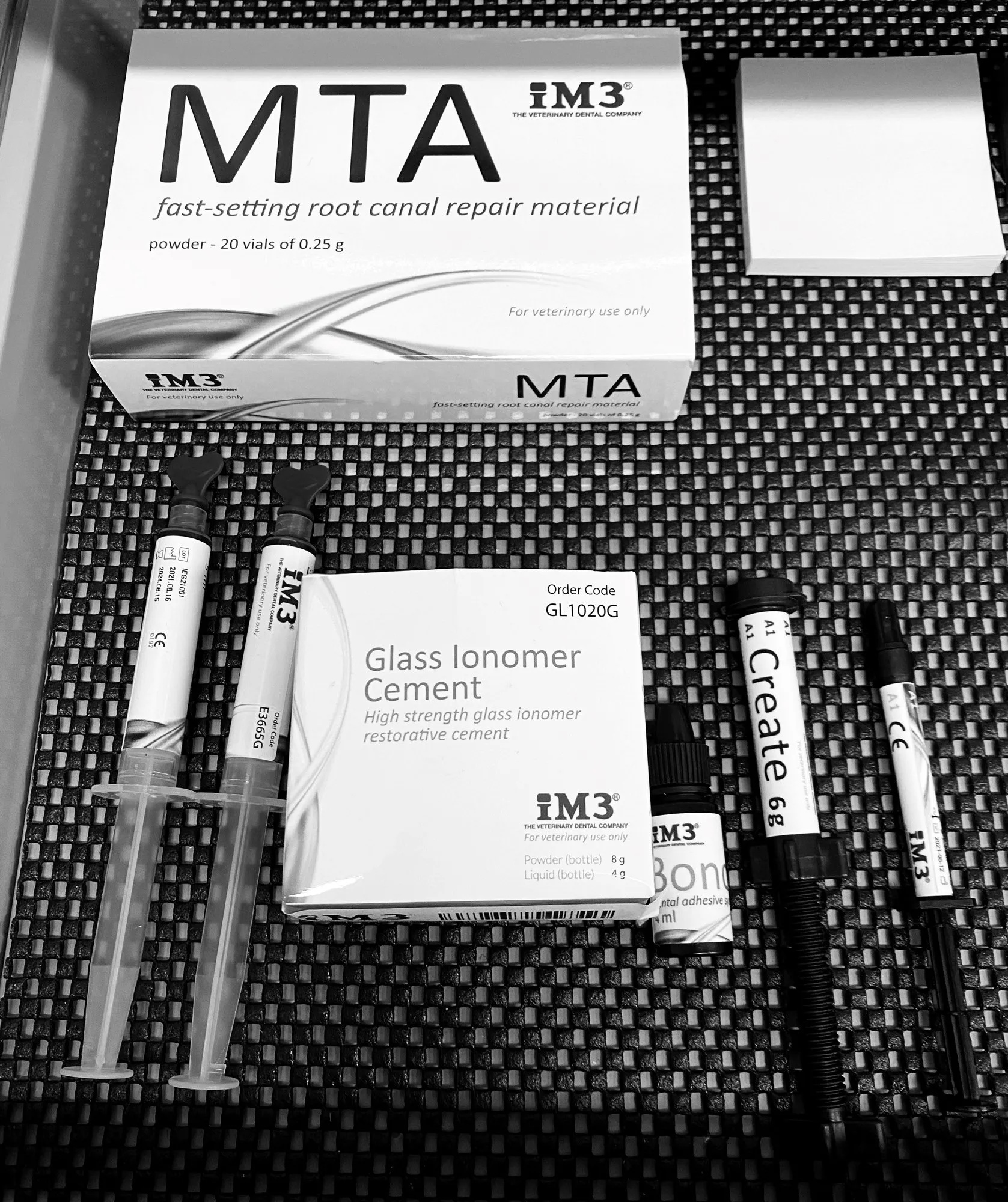
Dentistry Service
Restorative
WAVES HOSPITAL
Restorative (operative)
Restorative (operative) dentistry is the management of diseases of the teeth and their supporting structures to return the dentition to the functional requirements and normal appearance of the patient.
EXPERTISE & EXPERIENCE
Tooth Restoration
The most common reasons for restorations in pets are tooth fractures and enamel hypoplasia. The process is very similar to your dentist treating a cavity in your mouth. We use only non-toxic, aesthetic filling materials. Most commonly we use composite, which is basically a reinforced plastic, approximately the same colour as the tooth.
Whilst under a general anaesthetic we first take a dental x-ray to determine the extent of the defect and if there is root canal involvement. If there is root canal involvement, then a root canal procedure is necessary prior to restoration. Alternatively, the tooth can be extracted.
Next, all the diseased tooth structure is removed using a high-speed dental bur (drill) and the defect is shaped to accept the restoration (filling). The filling is then placed in the defect and hardened (cured) by an intense visible (blue) light. Finally, the restoration is finished by making the restoration conform to the natural anatomy and smoothing the restoration to decrease plaque retention and subsequent periodontal disease
CONTACT OUR TEAM


EXPERTISE & EXPERIENCE
Bonded Sealants For Fractured Teeth
Fractured teeth are a very common occurrence in our pets. When the nerve is directly exposed, it is called a complicated crown fracture. If your pet has an exposed nerve, this procedure is not suitable. Root canal therapy or extraction are the only options for a tooth with a complicated crown fracture.
Teeth which have been fractured without direct pulp exposure are termed uncomplicated crown fractures. These fractures damage the enamel and expose the underlying tooth structure called dentin. Dentin exposure results in pain (sensitivity) and the root canal system can become infected through small dentin tubules which run from the root canal to the enamel. The exposed tooth surface is also rougher than the normal enamel, and enhances plaque and calculus accumulation, accelerating the onset of periodontal disease.
We strongly recommend a bonded sealant on all uncomplicated crown fractures to:
- Reduce sensitivity and pain
- Block off the pathway for infection
- Smooth the tooth to decrease periodontal disease
Prior to performing the sealant, a dental x-ray is taken to ensure the tooth isn’t infected. If root canal infection is detected on x-ray, a root canal or extraction is necessary. If the radiograph is normal, the tooth is smoothed and then the bonded sealant is placed. These last a long time (at least a year), unless the tooth re-fractures, so choosing the correct chew treats is important.
CONTACT OUR TEAM
REGISTRATION
Have a referral?
Have you been referred by a vet? Please complete the registration form.
COMPLETE FORM
Dentistry Services
Endodontics
Linguoverted
Canine Teeth
Maxillofacial
Surgery
Periodontal
Surgery
Restorative
FAQs
OUR DENTISTRY TEAM
Meet Our Dentistry Team
Brace yourself. We are a team like no other. No fill-ins or tooth faries here, just vets who like the tooth, the whole tooth and nothing but the tooth. Our patients can't read our plaques. Molar bears, vampurrs and canines, we'll treat them all. A functional, pain-free mouth for your pet is our floss-ophy. You know the drill.... click on the link and check us out...let's see if we can get to the root of your pet's problems. It might just be love at first bite.
SAY HELLO
DEPARTMENTS
Specialties & Services
CONTACT US
Veterinary Referral & Emergency Services
CONTACT US
